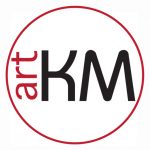Search:
Sparśa (biophony)
Sparśa is a Sanskrit term that is translated as “sense impression”. It is defined as the coming together of three factors: the sense organ, the sense object, and sense consciousness. Biophony is the collective voice of non-human life.
The echolocation micorophone was built and used for detecting and recording little brown myotis (mouse-eared bats). Bats emit sounds at a much higher frequency than most humans can hear; therefore, in order to record them a device such as this is necessary. The audio recordings were used in the biophony soundscape.
Incorporating vision and hearing (organ), object and movement (object), and interpretation and contemplation (consciousness) this piece embodies “sense impression” (Sparśa).
Copyright © 2024 Zoriça Kelly Markovich | Powered by Zoriça Kelly Markovich



